A rare conversation with Jil Sander as she releases her career-spanning monograph, ‘Jil Sander by Jil Sander’
Jil Sander tells Wallpaper* the story behind her new monograph, a kaleidoscopic journey through her collections designed by Irma Boom
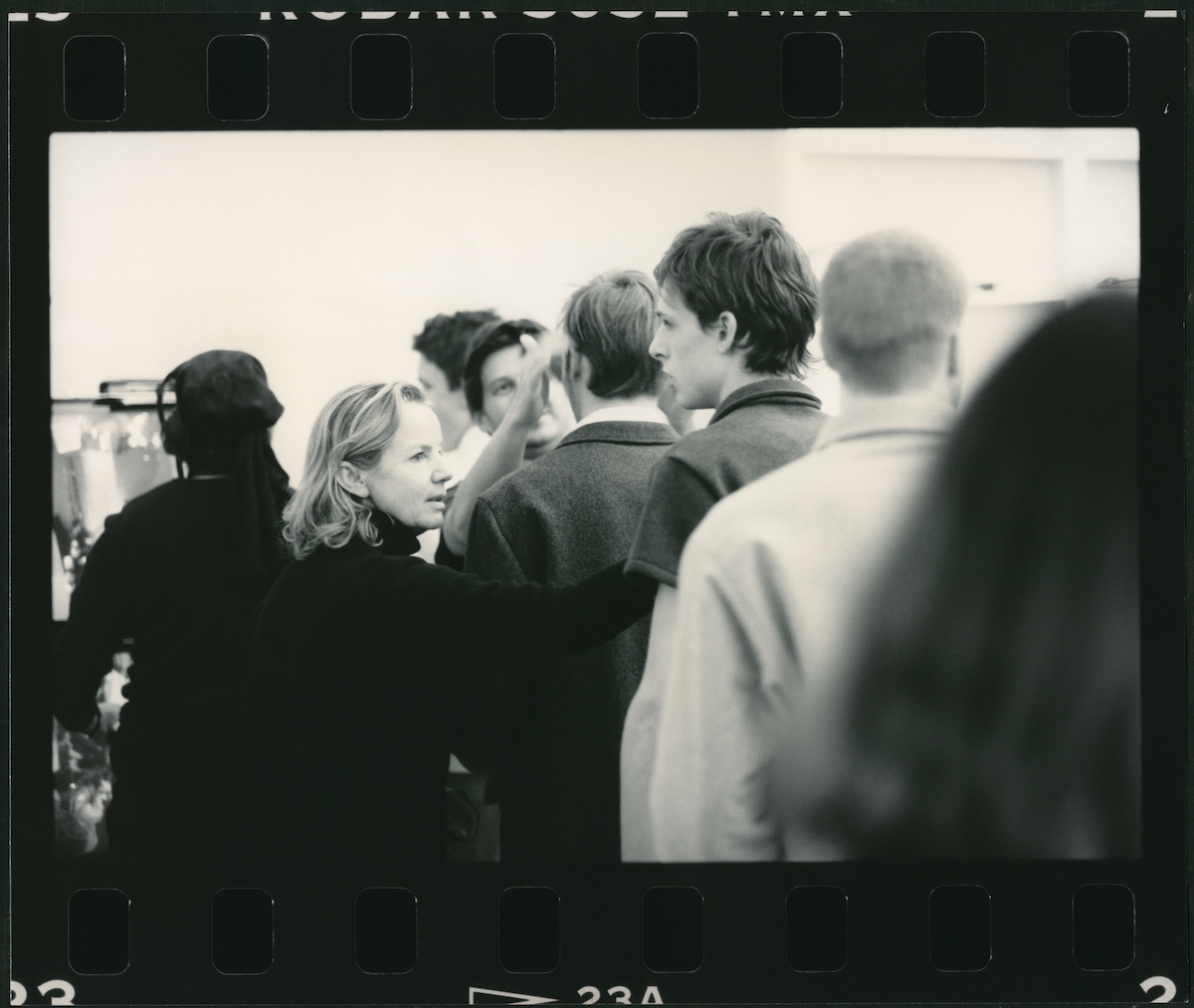
When it comes to legacy, the seminal German fashion designer Jil Sander ‘doesn’t like to presume’ how others might perceive her impact. ‘But “modernity” says a lot,’ she considers. ‘It’s a word that is rarely used these days.’
Sander’s career, which began with the opening of a Hamburg boutique in 1968 and the presentation of her first eponymous womenswear collection in 1973, has been defined by a relentless pursuit of modernity, honing a rigorous and minimal working wardrobe, nonetheless influenced by the midcentury elegance of her parent’s generation. The title of the first Jil Sander fragrance, ‘Pure’, launched in 1979, is another hint as to how she views her approach to design. A counterpoint to the hedonistic, overblown glamour of the 1980s, Sander’s vision was seductive in the way she reduced a garment to its absolute essence. By the 1990s, the rest of the fashion world would catch up.
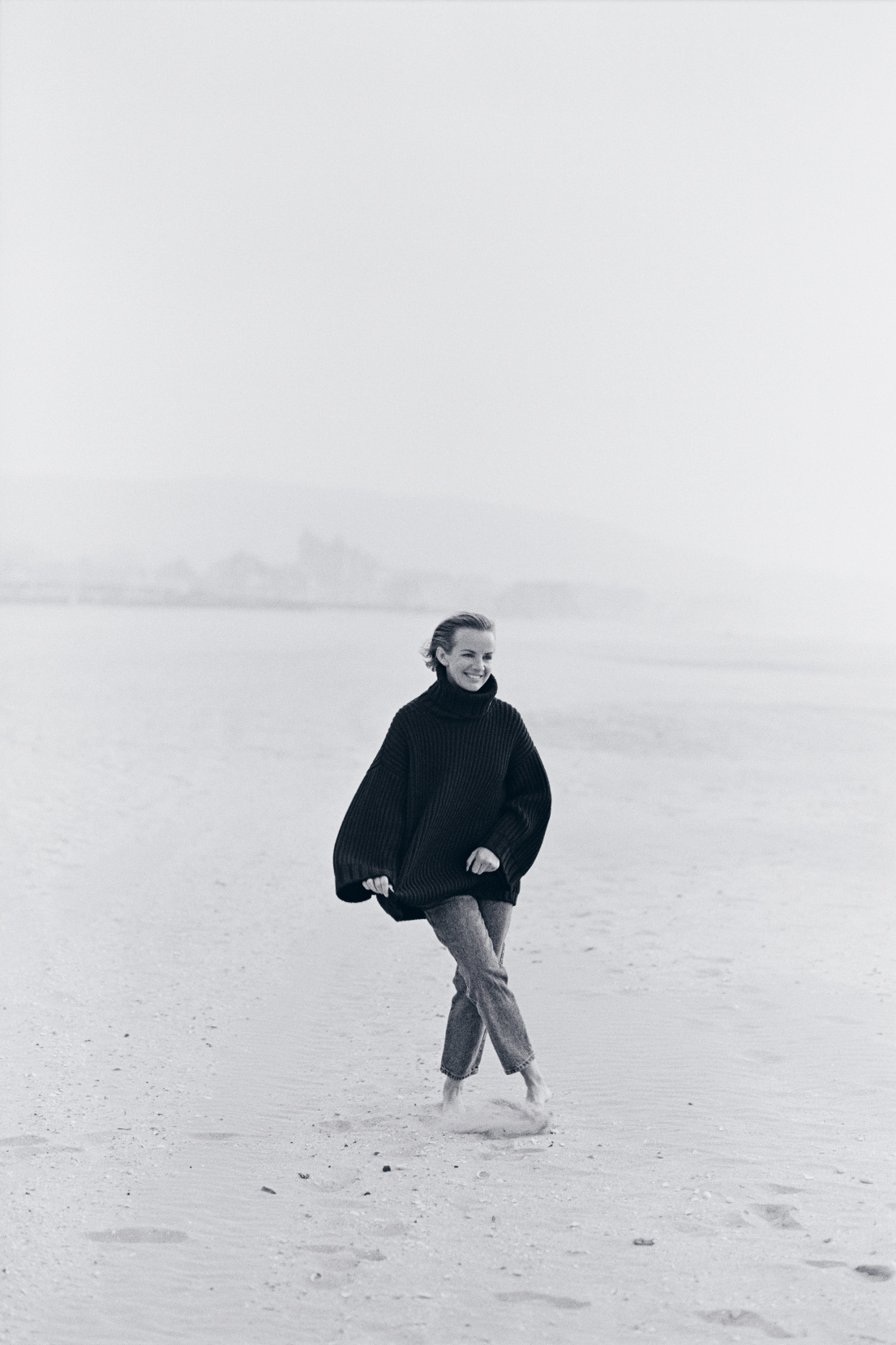
Jil Sander in 1991, taken from Marie Claire Germany editorial
‘Generally, I don’t like talking about my work,’ the designer admits, talking on the occasion of a new monograph, Jil Sander by Jil Sander, published by Munich-based publisher Prestel. ‘I’d rather demonstrate it, and let people try it on.’
Through the process of working on the book, however – an idea that had been percolating since the 2017 retrospective ‘Jil Sander: Present Tense’ at Frankfurt’s Museum of Applied Art – Sander found that it was illuminating to look backwards, and discuss, a career that has spanned over five decades. ‘I was surprised by the strong feminine side of my work,’ she says. ‘Some voices categorised me as a designer for business wear. But I was always interested in changing the general performance of men and women – I didn’t look for an androgynous appearance as such, as often happens in female businesswear. I wanted the gender element to be more subtle, I looked for a more intellectual sensuality.’
‘Generally, I don’t like talking about my work. I’d rather demonstrate it, and let people try it on’
Jil Sander
She traces this back to the 1950s and 1960s, the decades in which Sander grew up (she was born in 1943 in Wesselburen, on Germany’s North Sea coastline, during the Second World War). ‘Tailoring was still big in those days. People had a sense for cuts and patternmaking, and quality fabrics. What was lacking in my view was modernity – especially in women’s clothing. [I wanted] a total overhaul of patternmaking. The goal was to create class and understatement that were in sync with the age. My immediate personal motive for designing fashion was to escape the fallback on historical gender types in women’s fashion.’
Sander worked on the book personally, alongside Dutch graphic designer Irma Boom and German journalist and scholar Ingeborg Harms, who wrote the monograph’s various texts after extensive conversations with the designer. ‘I’d made a book to accompany “Present Tense”, but I needed another one to try out more experimental ways [of working]. We had to find a form for it, visually and regarding the text. I wanted it to look fresh and vivid, relating to today’s ways of looking at things.’

Jil Sander’s ‘Woman Pure’ fragrance with packaging by Peter Schmidt, first released in 1979
With the book’s design, Sander says she wants to replicate the experience of being at a runway show. The kaleidoscopic images – which comprise runway photographs, backstage documentary, campaigns, portraits and store interiors – are often tightly cropped in on details, turned on their side or spliced together into diptychs. ‘I wanted to recreate some of the excitement of being a front-row guest at a fashion show... Your eye wanders, you can’t take it all in, you zoom in on little things, you are overwhelmed by rhythm, sensuality, colour and movement.’
Wallpaper* Newsletter
Receive our daily digest of inspiration, escapism and design stories from around the world direct to your inbox.
These images are divided into loose sections, delineated by ‘quieter’ white pages of text, which come together to tell a story of Jil Sander’s life and design philosophy (sections include ‘Light and Shadow’ and ‘Future Spaces’, alongside other more esoteric thematics, like ‘Stonehenge and Spiral’, a consideration of the use of extremes in her work). ‘Jil Sander does not think of her work in terms of a chronological autobiography,’ writes Harms. ‘She has always been focused on the present and looks at what lies ahead.’
‘The sections came about naturally,’ says Sander. ‘The imagery suggested them. We needed some order to make it all digestible.’
‘The mood of the book is true to the frenzy which overtook us every time we prepared a show’
Jil Sander
Ultimately, she defines the book as an ‘experiment’. ‘I knew that I didn’t want to achieve a classic coffee table book, so it was trial and error until we got there. In the end, the mood of the book is true to the frenzy which overtook us every time we prepared a show. Those hectic moments when it takes all the energy you have to stay on course. The book packages all the shows into one.’
In 1999, Prada would purchase a 75 per cent stake in the Jil Sander label; she resigned not long after, in 2000. Sander would return to her eponymous brand twice: in 2003, she undertook a two-year stint before being succeeded by Raf Simons, and in 2012, after his departure, she would remain until the presentation of a S/S 2014 collection, before leaving for good. Collaborations with Uniqlo – under the J+ line – have taken place since, most recently in November 2021. That same year, Jil Sander the brand was acquired by Renzo Rosso’s OTB Group. The current designers are wife-and-husband duo Lucie and Luke Meier. ‘I am following fashion, of course, but being a designer myself, I am a bit spoiled,’ says Sander.
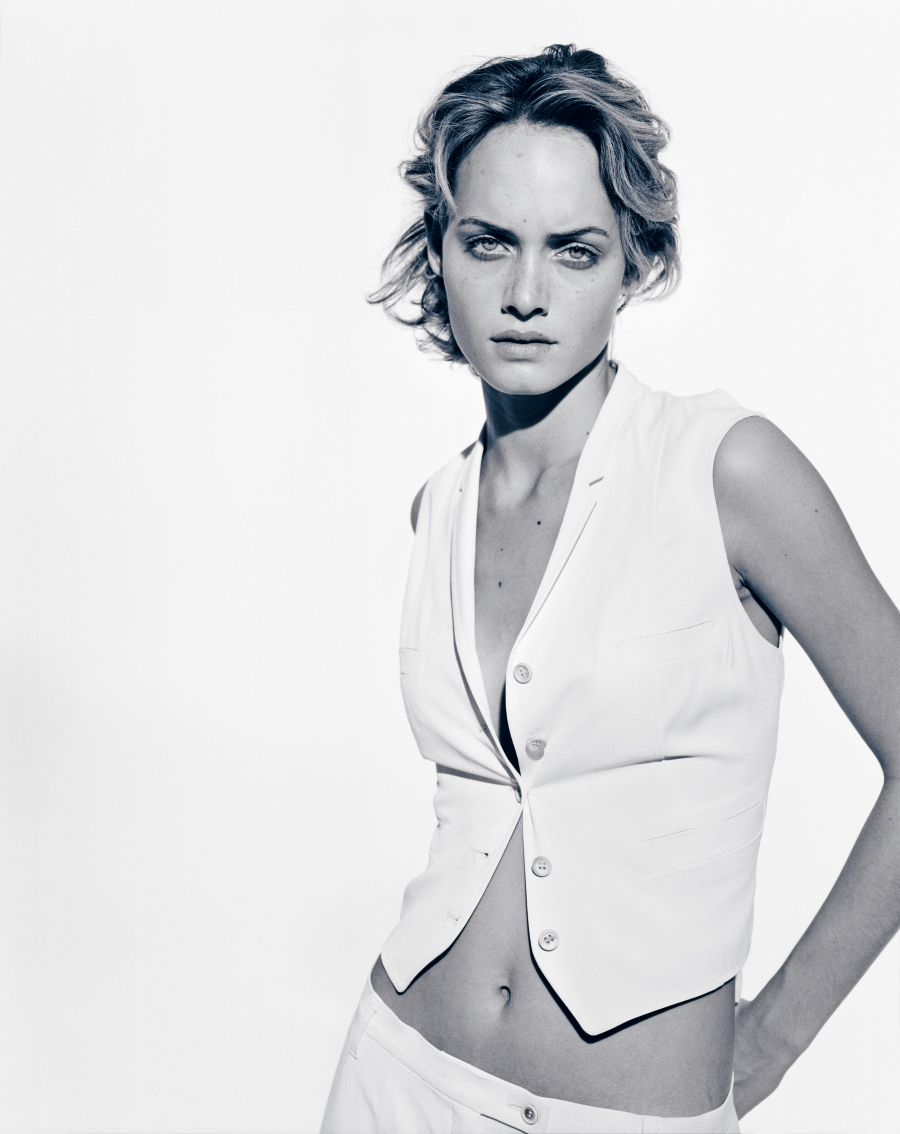
Jil Sander S/S 1994 campaign, featuring model Amber Valletta
As for why now felt like the right time to publish this career-spanning monograph, Sander says it has in fact been a long time coming. ‘I wished to publish it earlier, but it takes time to get things right. [Though] it may not be a bad moment now to bring it out, since we are overwhelmed by fashion information, and it helps to condense one’s message into the concise format of a book.’
In the book’s brief introduction, Sander elaborates further. ‘Looking back, I realise I was part of a broader reawakening that influenced my childhood in Hamburg,’ she says, referring to the rebuilding of Germany after the ravages of war and Nazi rule. ‘I was witness to a democratic reconstruction, a clearing away of anything standing in the way of a better future. We now find ourselves in another period of upheaval and renewal. I hope it inspired this book.’
Jil Sander by Jil Sander, designed by Irma Boom, texts by Ingeborg Harms, is published by Prestel. Out now in the UK (available from waterstones.com) and on 3 December 2024 in the United States (preorder at barnesandnoble.com/).
prestelpublishing.penguinrandomhouse.de
Jack Moss is the Fashion Features Editor at Wallpaper*, joining the team in 2022. Having previously been the digital features editor at AnOther and digital editor at 10 and 10 Men magazines, he has also contributed to titles including i-D, Dazed, 10 Magazine, Mr Porter’s The Journal and more, while also featuring in Dazed: 32 Years Confused: The Covers, published by Rizzoli. He is particularly interested in the moments when fashion intersects with other creative disciplines – notably art and design – as well as championing a new generation of international talent and reporting from international fashion weeks. Across his career, he has interviewed the fashion industry’s leading figures, including Rick Owens, Pieter Mulier, Jonathan Anderson, Grace Wales Bonner, Christian Lacroix, Kate Moss and Manolo Blahnik.
-
 Extreme Cashmere reimagines retail with its new Amsterdam store: ‘You want to take your shoes off and stay’
Extreme Cashmere reimagines retail with its new Amsterdam store: ‘You want to take your shoes off and stay’Wallpaper* takes a tour of Extreme Cashmere’s new Amsterdam store, a space which reflects the label’s famed hospitality and unconventional approach to knitwear
By Jack Moss
-
 Titanium watches are strong, light and enduring: here are some of the best
Titanium watches are strong, light and enduring: here are some of the bestBrands including Bremont, Christopher Ward and Grand Seiko are exploring the possibilities of titanium watches
By Chris Hall
-
 Warp Records announces its first event in over a decade at the Barbican
Warp Records announces its first event in over a decade at the Barbican‘A Warp Happening,' landing 14 June, is guaranteed to be an epic day out
By Tianna Williams
-
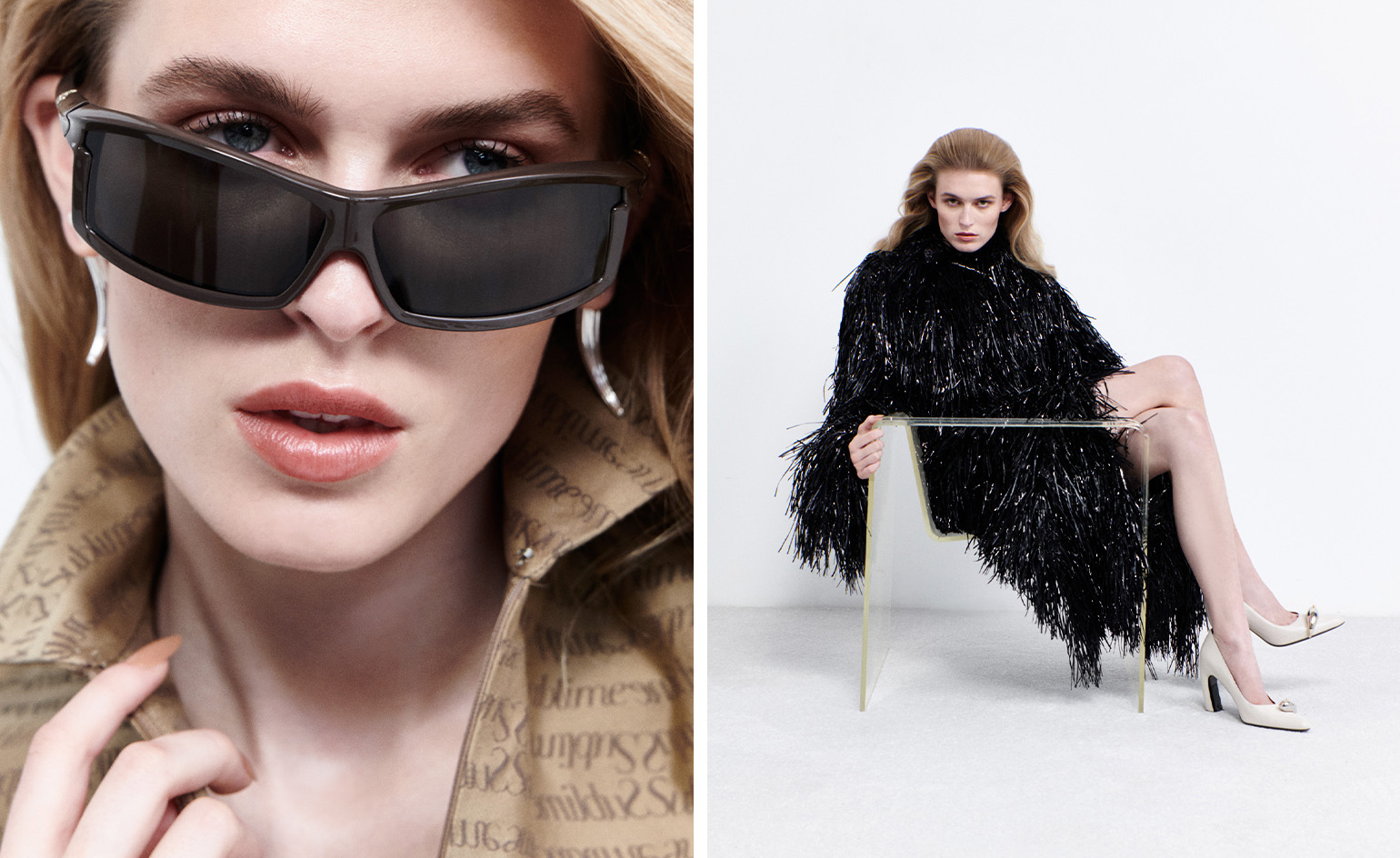 These illuminating fashion interviews tell the story of style in 2024
These illuminating fashion interviews tell the story of style in 2024Selected by fashion features editor Jack Moss from the pages of Wallpaper*, these interviews tell the stories behind the designers who have shaped 2024 – from Kim Jones to Tory Burch, Willy Chavarria to Martine Rose
By Jack Moss
-
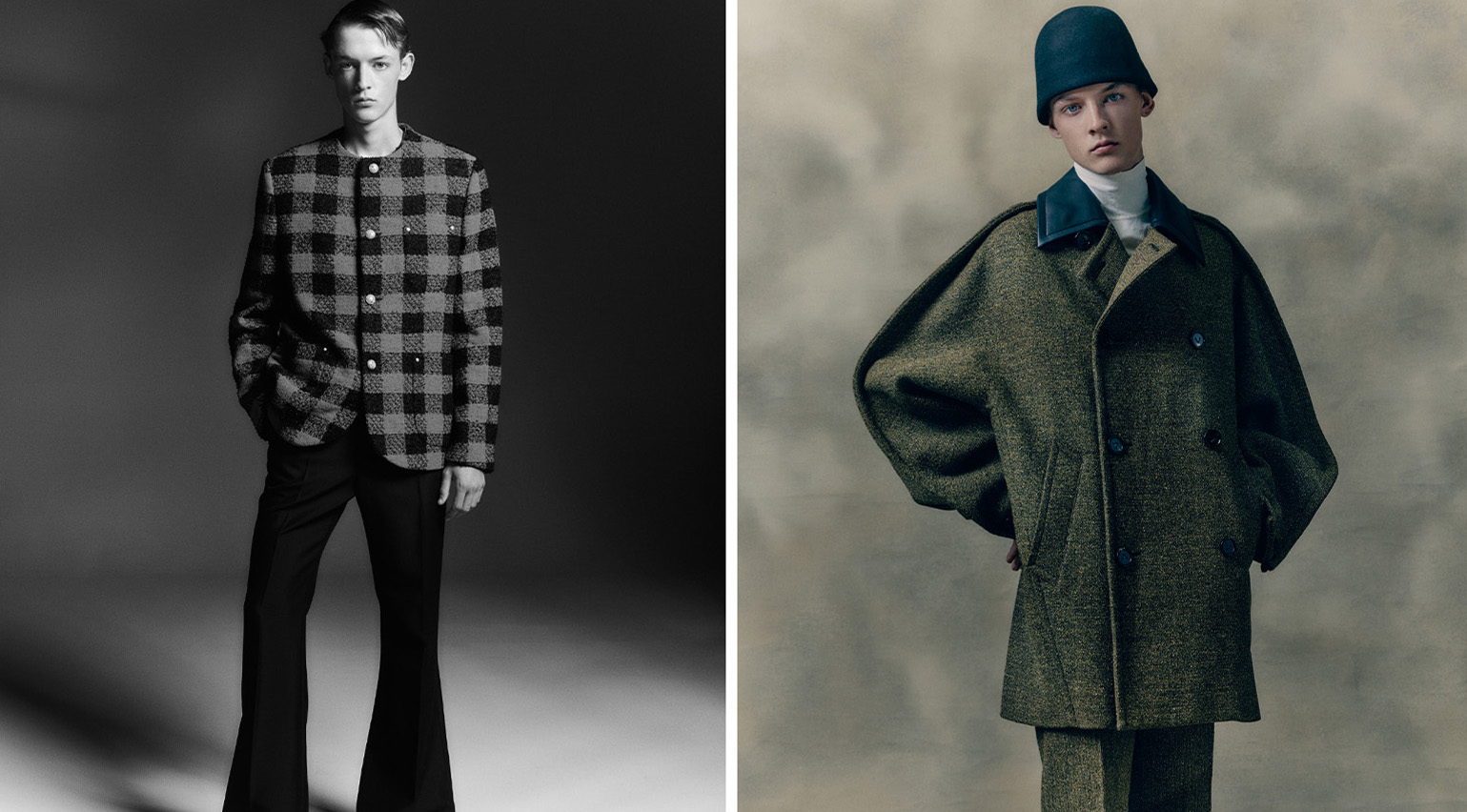 The A/W 2024 menswear collections were defined by a ‘new flamboyance’
The A/W 2024 menswear collections were defined by a ‘new flamboyance’Sleek and streamlined ensembles imbued with a sense of performance take centre stage in ‘Quiet on Set’, a portfolio of the A/W 2024 menswear collections photographed by Matthieu Delbreuve
By Jack Moss
-
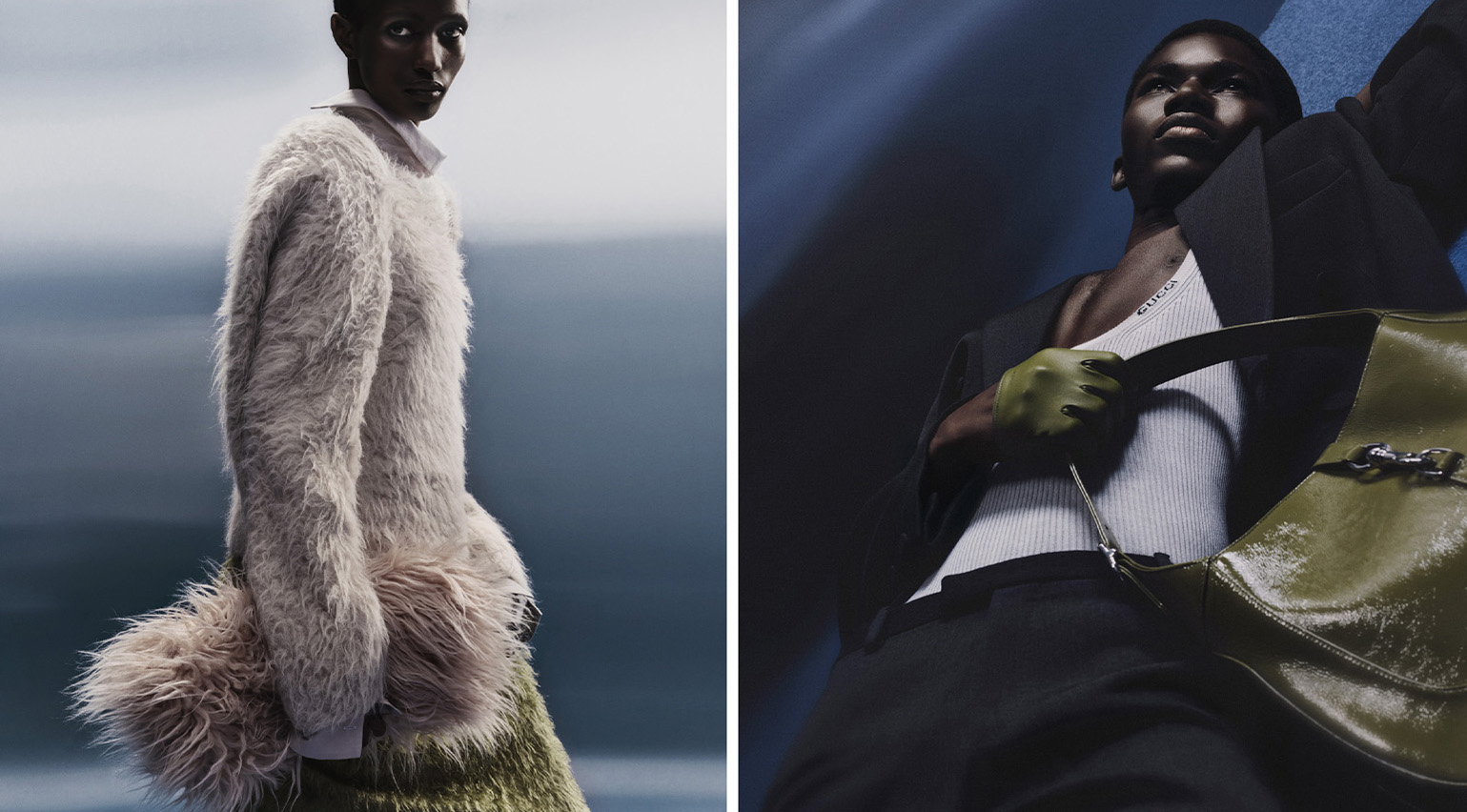 In fashion: the defining looks and trends of the A/W 2024 collections
In fashion: the defining looks and trends of the A/W 2024 collectionsWe highlight the standout moments of the A/W 2024 season, from scrunched-up gloves and seductive leather ties to cocooning balaclavas and decadent feathers
By Jack Moss
-
 Extraordinary runway sets from the A/W 2024 shows
Extraordinary runway sets from the A/W 2024 shows12 scene-stealing runway sets and show spaces from A/W 2024 fashion month, featuring Murano-glass cacti, rubber armchairs, flashing orbs and more
By Jack Moss
-
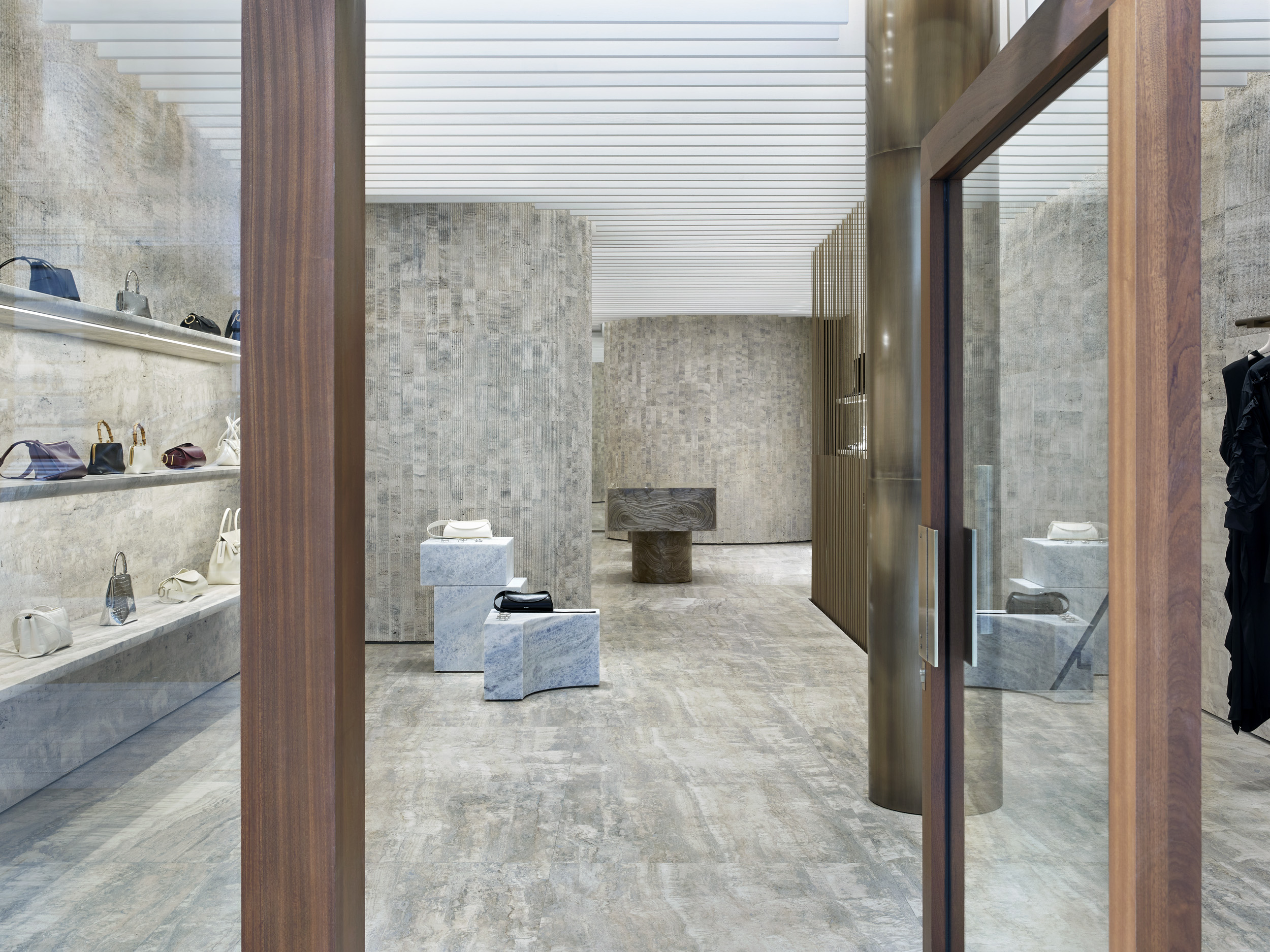 Inside Jil Sander’s beautiful new London store, an exercise in texture and contrast
Inside Jil Sander’s beautiful new London store, an exercise in texture and contrastLucie and Luke Meier of Jil Sander give Wallpaper* a tour of their Bond Street store, which was created alongside architects Casper Mueller Kneer
By Jack Moss
-
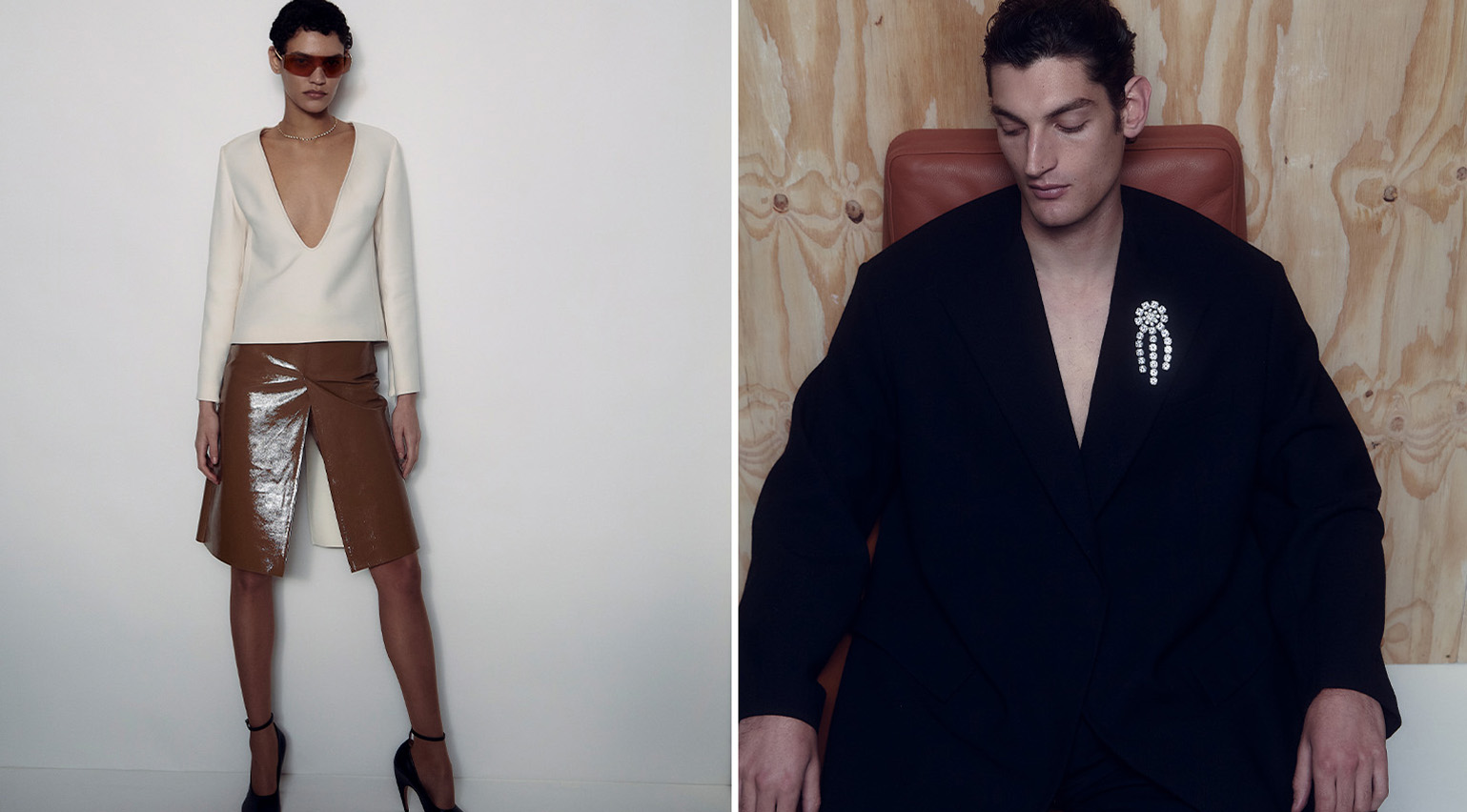 Best in shows: Wallpaper* picks S/S 2024’s standout looks
Best in shows: Wallpaper* picks S/S 2024’s standout looksAs part of Wallpaper’s Design Awards 2024 issue, we select the winning S/S 2024 runway collections – and their defining looks – at the start of a new season in style
By Jack Moss
-
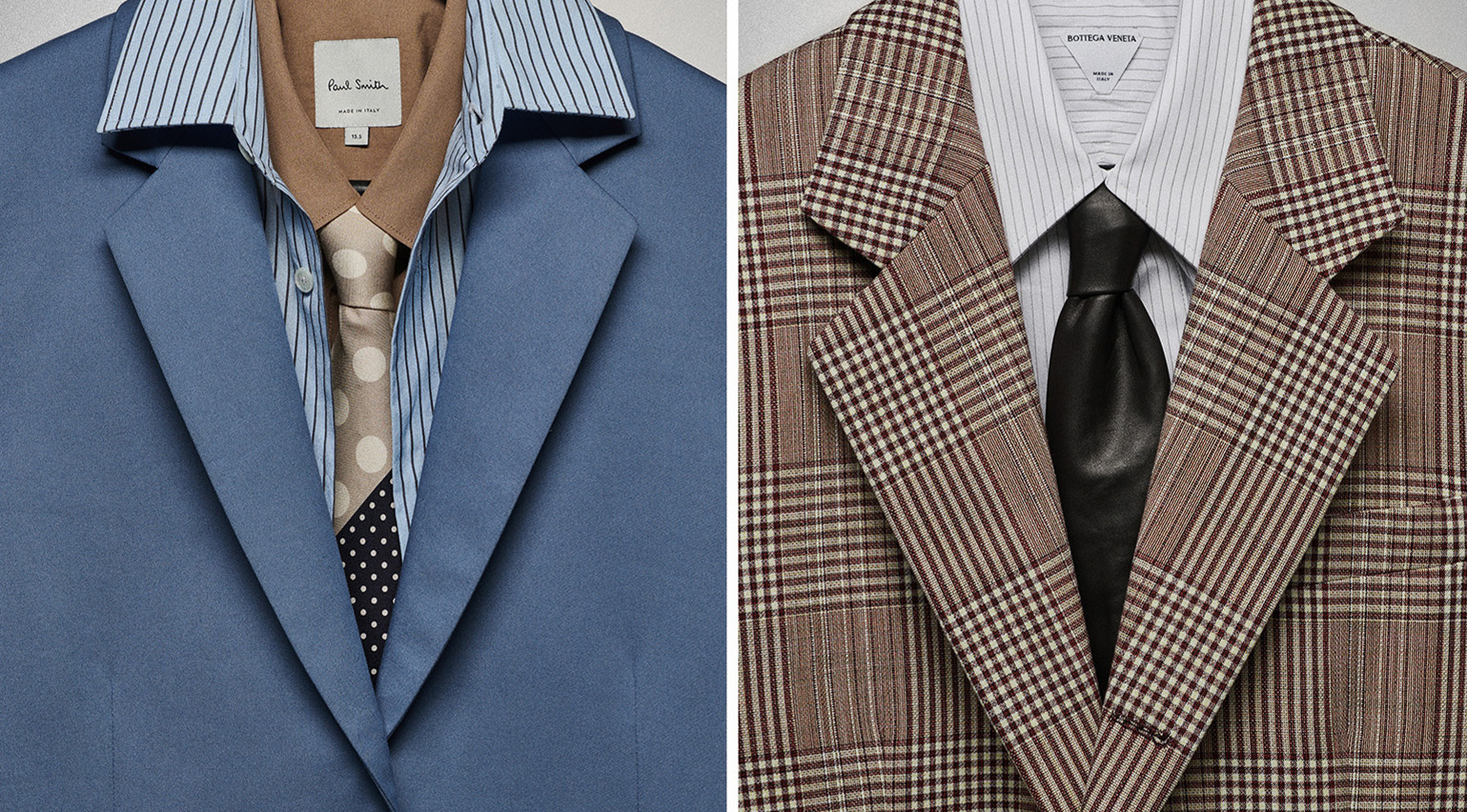 Why the men’s tie is no longer a relic of the past
Why the men’s tie is no longer a relic of the pastIn the hands of these designers, the men’s tie is being reinvented in colourful, imaginative new fabrications – making it 2024’s most desirable accessory
By Jack Moss
-
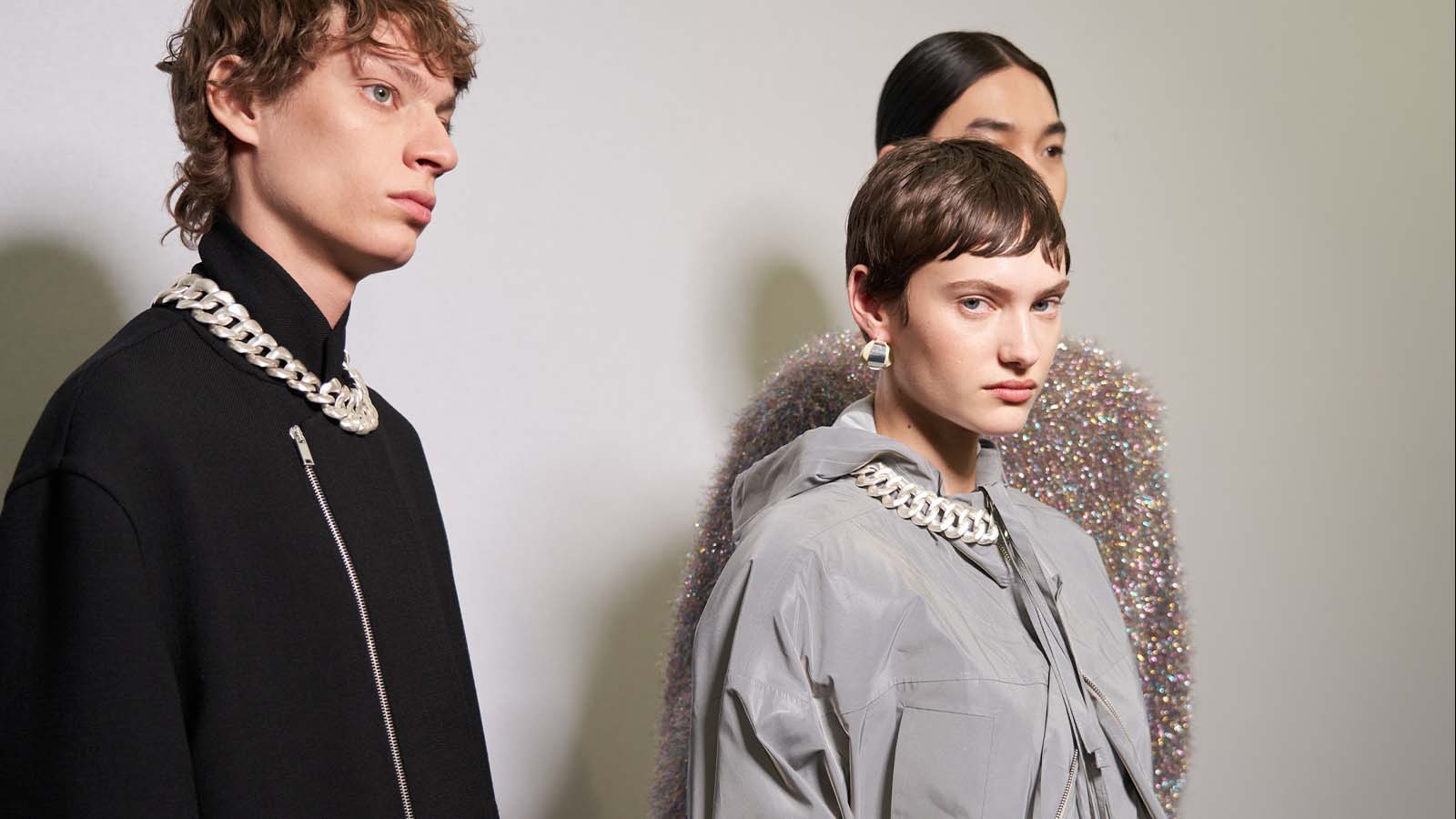 Lucie and Luke Meier on their eclectic new vision for Jil Sander
Lucie and Luke Meier on their eclectic new vision for Jil Sander‘It’s quite unexpected,’ say Lucie and Luke Meier of their latest collection for Jil Sander, which began by looking back to the 1990s music scene. Here, speaking to Scarlett Conlon, they tell Wallpaper* the story behind the A/W 2023 collection
By Scarlett Conlon